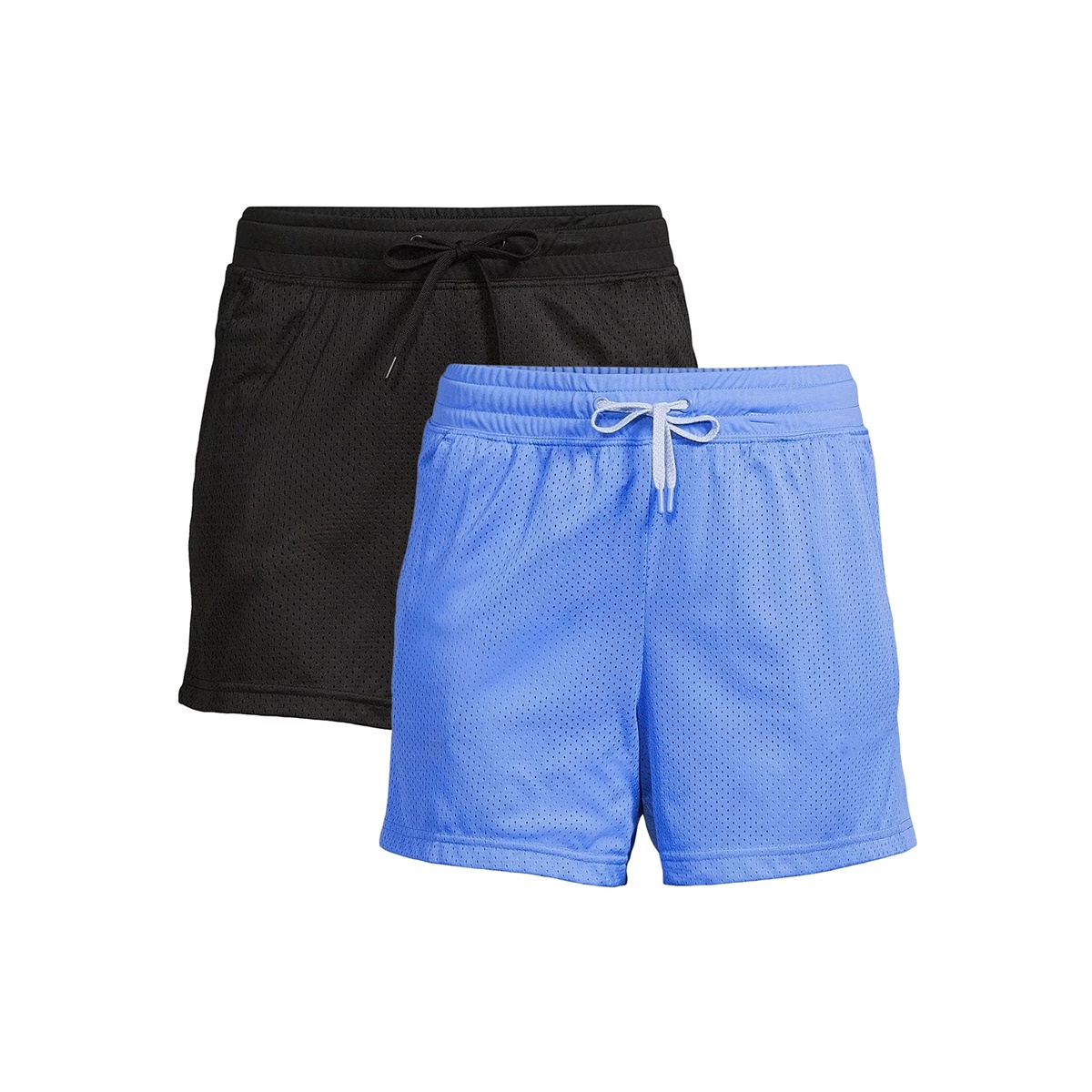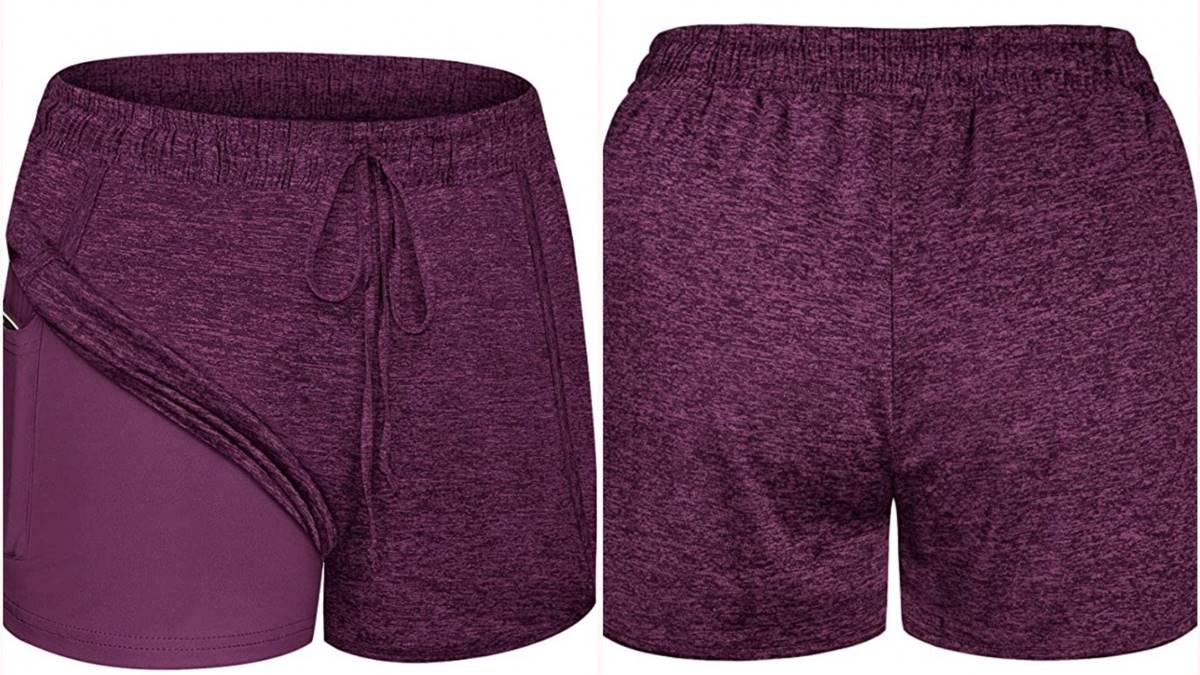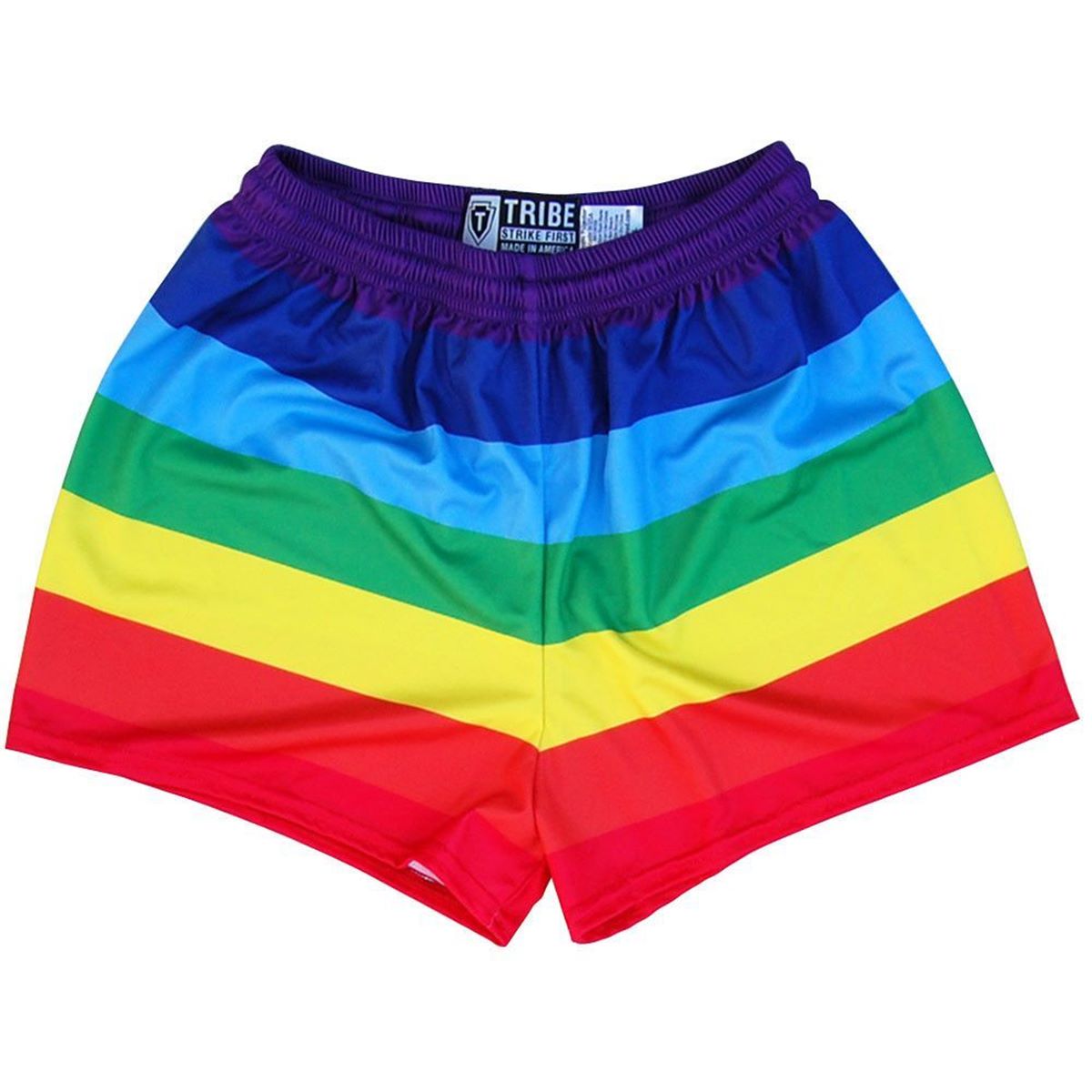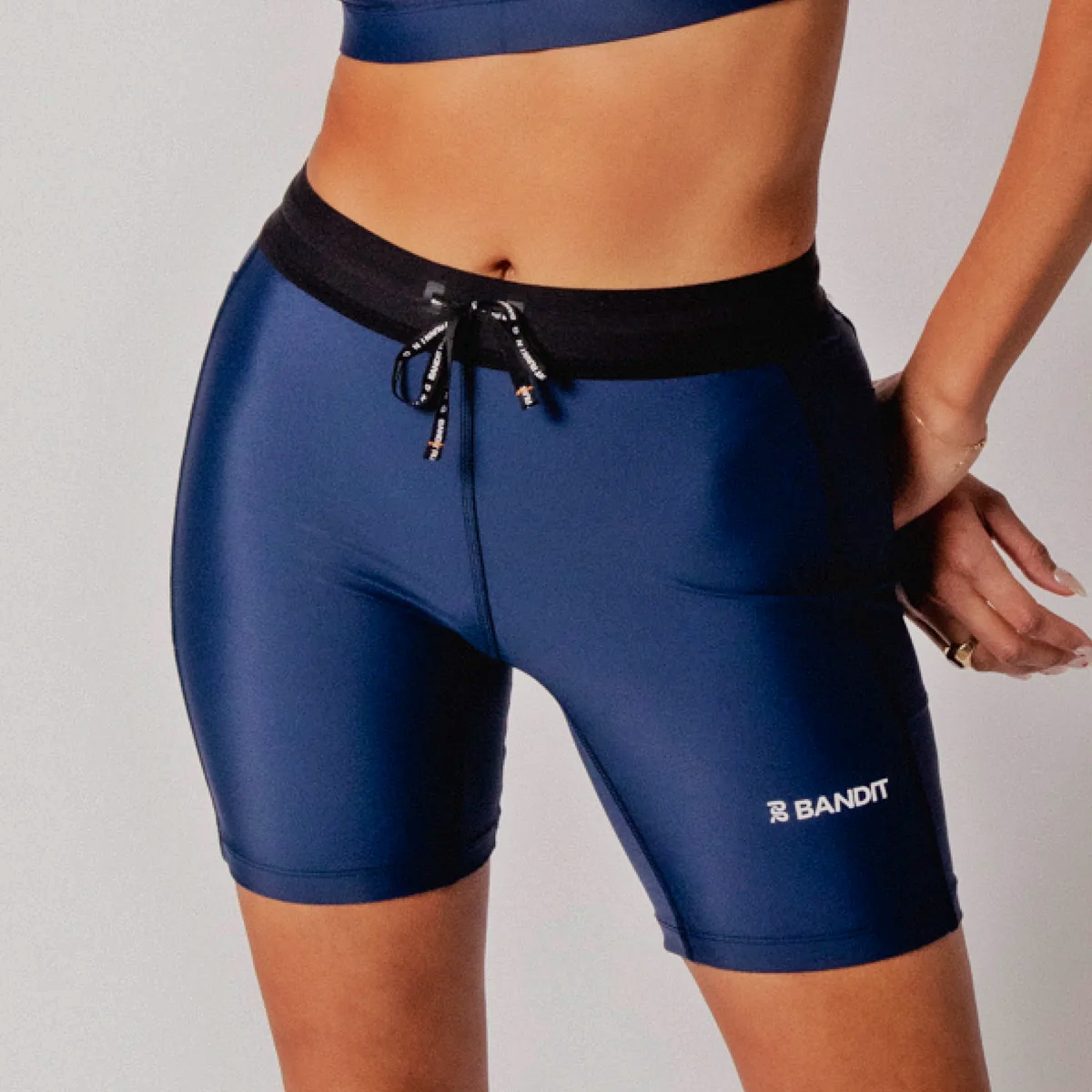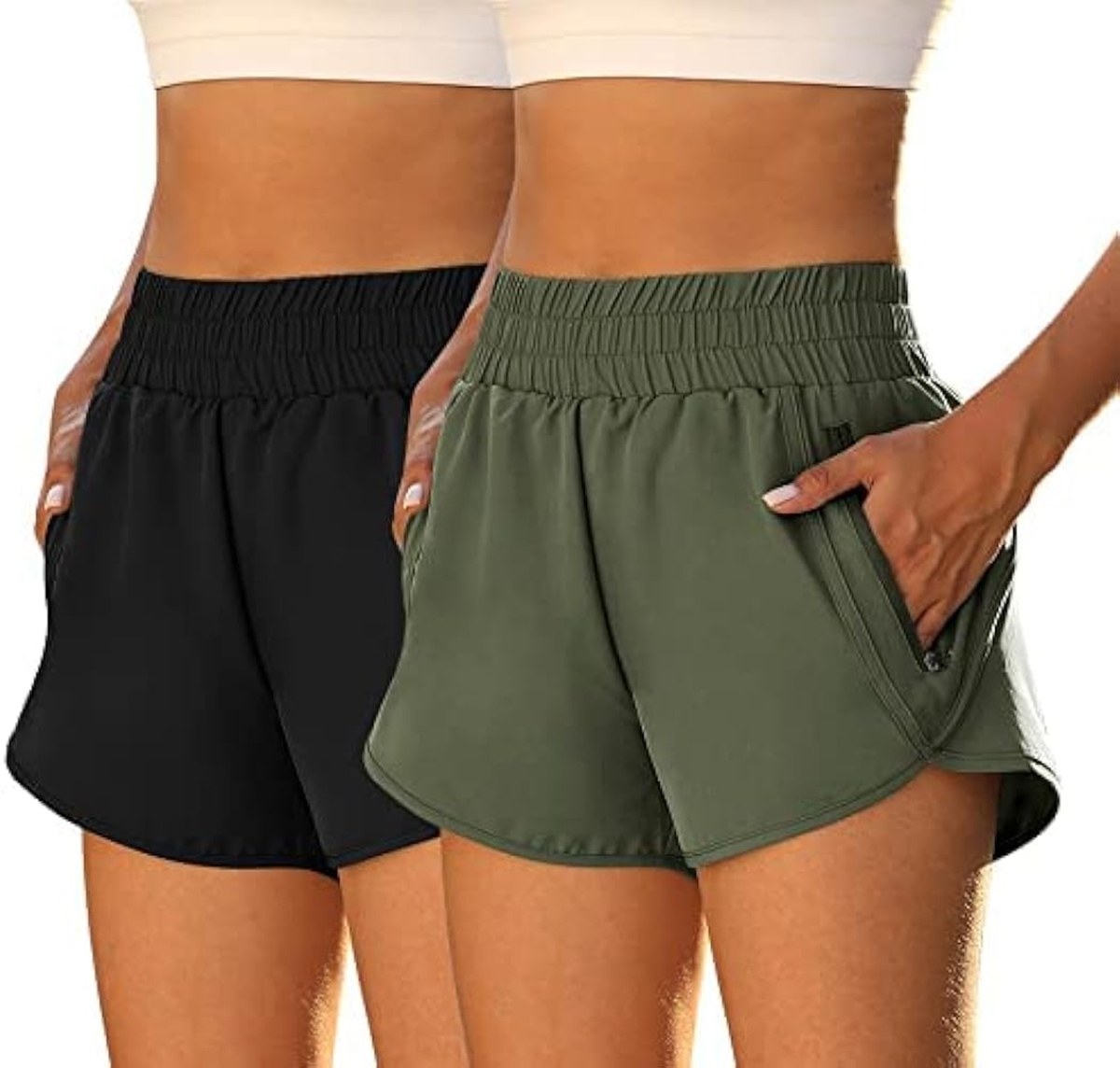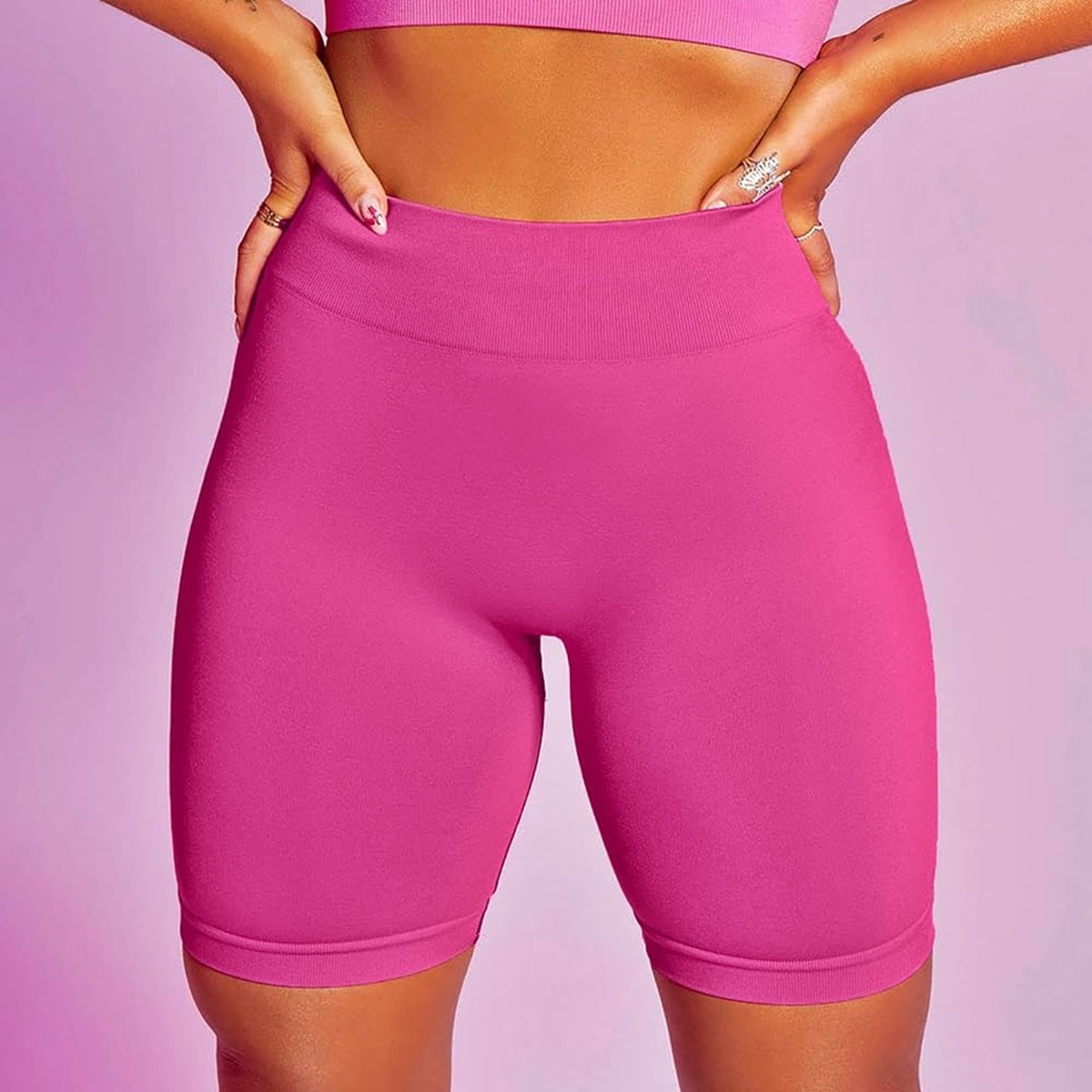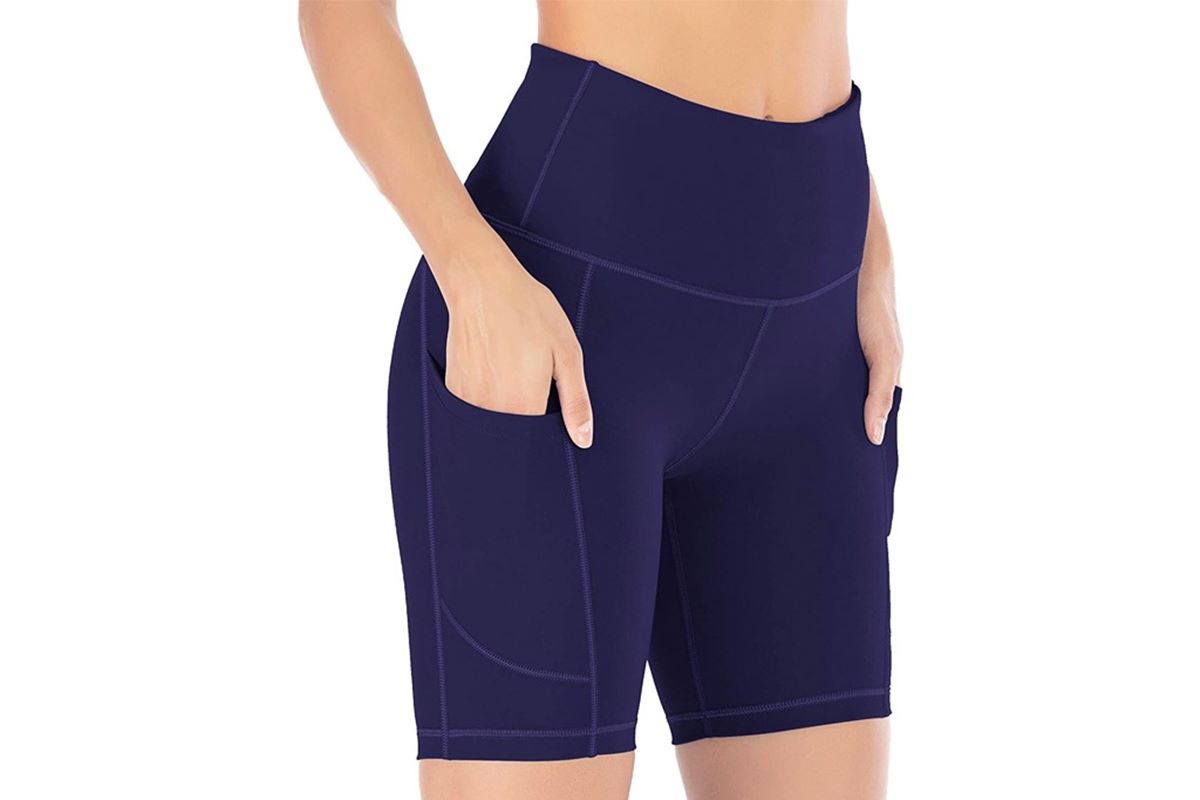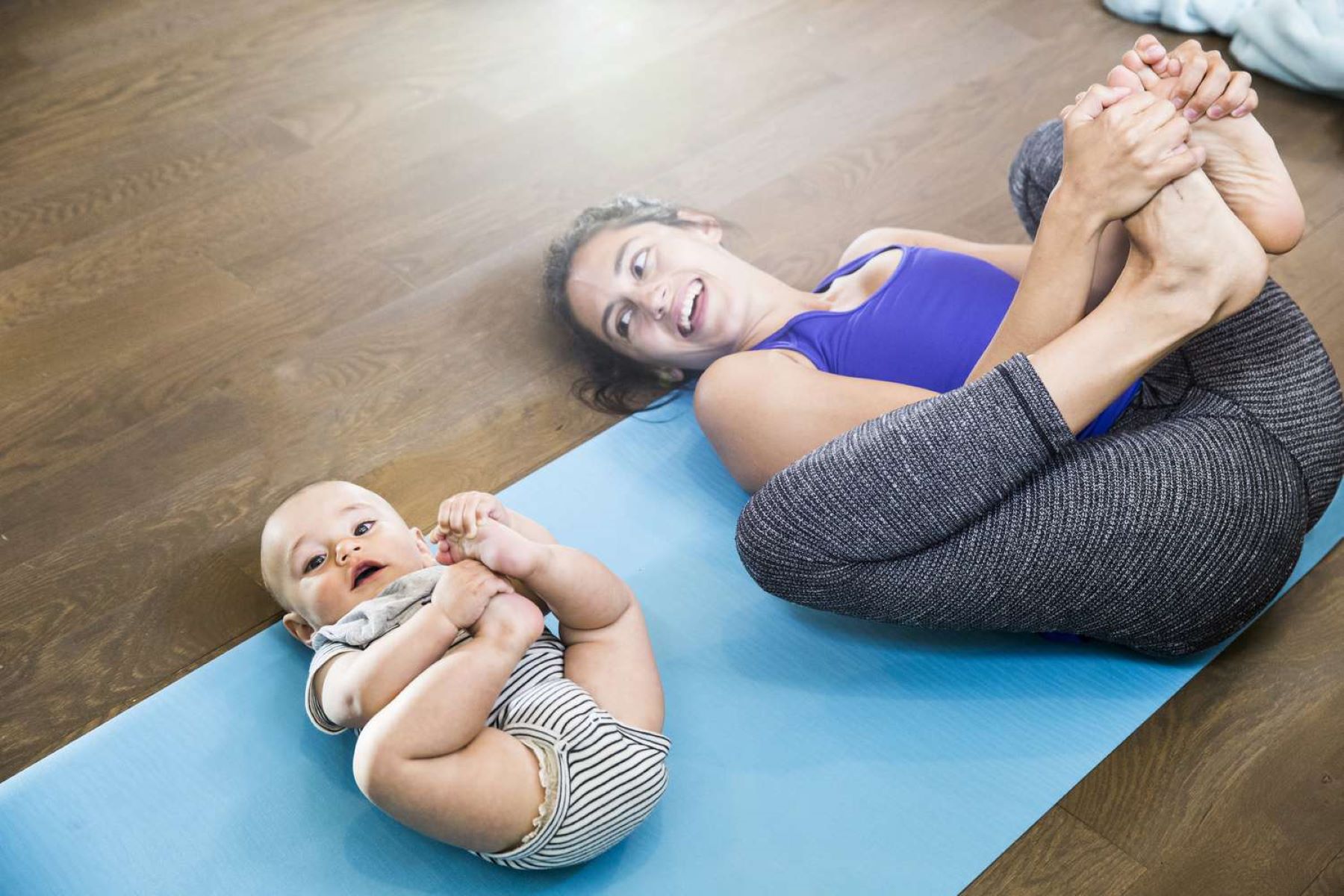Home>Misc>Featured>A Video For Women Who Wear Activewear To Do Not-Active Things


Featured
A Video For Women Who Wear Activewear To Do Not-Active Things
Modified: August 19, 2023
"Discover the latest featured video for women wearing activewear, even for non-active activities. Stay trendy and comfortable in any situation!"
Introduction
Activewear has experienced a massive surge in popularity over the past decade. What was once reserved solely for gym workouts and athletic activities has now become a fashion statement worn by women everywhere, even for non-active pursuits. Whether it’s running errands, grabbing coffee with friends, or simply lounging at home, many women are choosing activewear as their go-to outfit choice.
The rise of activewear can be attributed to various factors. With the increasing focus on health and wellness, more individuals are incorporating exercise into their daily routines. This shift towards a healthier lifestyle has created a demand for comfortable and functional clothing that can seamlessly transition from the gym to everyday life. Activewear, with its moisture-wicking fabrics, stretchy materials, and stylish designs, fits the bill perfectly.
One of the key drivers behind the trend of wearing activewear for non-active activities is the desire for convenience and simplicity. In today’s fast-paced world, many women are looking for effortless dressing options that are both comfortable and stylish. Activewear provides the perfect solution, offering a range of versatile and fashionable pieces that can be easily mixed and matched.
Moreover, the influence of social media and celebrities cannot be overlooked. With platforms like Instagram and TikTok showcasing trendy activewear brands and fitness influencers, it has become easier than ever for women to discover new styles and participate in the activewear movement. The aspirational appeal of fitness influencers and their active lifestyles has created a desire to emulate their fashion choices, both in and out of the gym.
Another driving factor behind the popularity of activewear for non-active activities is the comfort factor. Activewear is designed to be breathable, lightweight, and flexible, making it incredibly comfortable to wear throughout the day. The stretchy fabrics allow for unrestricted movement, ensuring comfort whether sitting at a desk or running errands. This level of comfort has made activewear a popular choice for many women seeking an alternative to restrictive and uncomfortable clothing options.
While the activewear trend has gained widespread popularity, it’s not without its criticisms and controversies. Detractors argue that wearing activewear for non-active activities perpetuates a “lazy” or “sloppy” image and undermines the purpose of activewear. Critics also question the sustainability of the fast-fashion activewear industry and its impact on the environment.
In this article, we will delve into the trend of wearing activewear for non-active activities and explore the various reasons why women choose to embrace this style. We will also examine the influence of social media and celebrities, discuss the comfort factor, and explore the criticisms and controversies surrounding this trend. So, strap on your favorite pair of leggings and join us on this journey through the world of activewear!
The Rise of Activewear
In recent years, activewear has experienced a remarkable surge in popularity, transforming from solely functional workout attire to a booming fashion trend. This shift can be attributed to several key factors that have revolutionized the way women approach their wardrobe choices.
One of the main factors contributing to the rise of activewear is the increasing emphasis on health and fitness in society. More people are embracing exercise as an essential part of their daily routine, and with this shift, there is a need for clothing that supports an active lifestyle. Activewear, with its sweat-wicking fabrics, breathability, and ability to facilitate movement, has become the go-to choice for fitness enthusiasts.
Another significant factor driving the popularity of activewear is the increasing prevalence of athleisure. Athleisure refers to the trend of blending workout clothing with everyday fashion. With athleisure, women can effortlessly transition from the gym to running errands or meeting friends for a casual outing, without sacrificing comfort or style.
Additionally, we cannot overlook the influence of technology and innovation in the activewear industry. Brands are constantly developing new fabrics and materials that offer improved performance, such as moisture-wicking properties, compression technology, and enhanced breathability. These advancements have made activewear not only functional but also fashionable.
The rise of activewear has also been fueled by the growing demand for versatile and multipurpose clothing. Women today lead busy lives and value convenience. Activewear provides a solution by offering outfits that can be worn for various activities, whether it’s a yoga class, a hike in the mountains, or simply lounging at home. This versatility eliminates the need for multiple wardrobe changes throughout the day, saving time and simplifying the dressing process.
Furthermore, the rise of social media and the influence of fitness influencers have played a significant role in popularizing activewear. Platforms like Instagram and TikTok have become hubs for fitness enthusiasts, showcasing their workout routines, personal style, and favorite activewear brands. This exposure creates a sense of aspiration and desire to be part of the fitness culture, influencing women to adopt activewear as a fashion statement.
The rise of activewear is a testament to the changing cultural landscape and evolving fashion trends. Women are prioritizing comfort, functionality, and versatility in their wardrobe choices, and activewear meets these criteria perfectly. As a result, activewear has permeated all aspects of daily life, from workouts at the gym to casual outings and even professional environments.
The Trend of Wearing Activewear for Non-Active Activities
Gone are the days when activewear was confined to the gym or athletic activities. A growing trend among women is wearing activewear for non-active pursuits. Whether it’s running errands, meeting friends for brunch, or even attending casual work meetings, activewear has become the go-to choice for fashion-forward women.
One of the main reasons behind this trend is the desire for convenience and time-saving. Activewear provides a quick and effortless solution for women who are constantly on the go. The comfortable and stretchy fabrics allow for easy movement, making it perfect for running errands or engaging in day-to-day activities.
Another factor driving the trend is the rise of athleisure fashion. With the merging of fitness and fashion, activewear has become a stylish and socially acceptable choice for non-active occasions. Women can now feel comfortable and trendy while grocery shopping, grabbing coffee, or attending casual events.
The athleisure trend has also been influenced by prominent celebrities and influencers. Many fashion icons and social media stars have embraced activewear as an everyday fashion staple, inspiring their followers to do the same. The influence of these trendsetters has helped normalize the act of wearing activewear for non-active activities.
Furthermore, the comfort factor of activewear cannot be overlooked. The soft and breathable materials, combined with stretchy fits and adjustable waistbands, make activewear incredibly comfortable to wear for extended periods. This comfort has made activewear a popular choice for women seeking all-day comfort without compromising on style.
Activewear also offers versatility in terms of styling options. With a wide range of designs, colors, and patterns available, women can now personalize their activewear outfits to reflect their personality and style aesthetic. This versatility allows for self-expression and creativity in incorporating activewear into everyday fashion.
Additionally, the trend of wearing activewear for non-active activities has blurred the lines between traditional fashion and athletic wear. Activewear brands have responded to this demand by designing pieces that are both functional and fashionable. The incorporation of trendy elements such as mesh panels, unique prints, and stylish cuts has made activewear more visually appealing and suitable for a variety of settings.
While the trend of wearing activewear for non-active activities has faced some criticism, it has undoubtedly become a popular choice for modern women. The combination of convenience, comfort, and fashion-forward designs has made activewear a versatile and functional option that transcends traditional fashion boundaries.
Breaking Stereotypes: Activewear Beyond the Gym
Activewear has long been associated with the gym or athletic activities, but the trend of wearing activewear for non-active pursuits has shattered these stereotypes. Women are redefining the boundaries of activewear, embracing it as a fashion statement that transcends traditional athletic wear.
One of the key factors behind this shift is the changing perception of what constitutes fashionable attire. In the past, activewear might have been seen as too casual or sloppy for everyday wear. However, as fashion norms have evolved, so too has the acceptance of activewear as a stylish choice for various occasions.
Women are now pairing their favorite leggings with oversized sweaters, denim jackets, or fashionable sneakers for a chic and casual look. The combination of activewear with other wardrobe pieces creates a trendy ensemble that can be worn for brunch, shopping trips, or even casual work meetings.
Furthermore, there has been a rise in activewear brands that focus on creating stylish and versatile designs. These brands recognize the demand for activewear that can seamlessly transition from the gym to everyday life. As a result, they have started offering trendy and fashion-forward activewear pieces that blur the lines between athletic wear and streetwear.
Another important aspect of breaking stereotypes is the inclusivity that activewear brings to the fashion industry. Activewear is known for its stretchy and forgiving materials, which cater to a wide range of body types and sizes. This inclusivity sends a powerful message of body positivity and acceptance, challenging the narrow beauty standards perpetuated in traditional fashion.
The trend of wearing activewear beyond the gym is also influenced by the growing focus on self-care and wellness. Activewear serves as a visual reminder of one’s commitment to leading a healthy and active lifestyle. By wearing activewear outside of the gym, women embrace their dedication to self-care and showcase their wellness journey to the world.
Moreover, the COVID-19 pandemic has further accelerated the acceptance and adoption of activewear as everyday fashion. With remote work and a shift towards more relaxed dress codes, women have found comfort in the versatility and functionality of activewear. It offers the perfect balance between comfort and professional style while working from home or attending virtual meetings.
The breaking of stereotypes surrounding activewear has empowered women to embrace their own sense of style and challenge societal expectations. It encourages self-expression, promotes body positivity, and provides freedom in choosing what feels comfortable and authentic.
As the fashion industry continues to evolve, we can expect to see the trend of wearing activewear beyond the gym persist. Activewear has become a symbol of empowerment, allowing women to defy traditional fashion norms and celebrate their active lifestyles in all aspects of their lives.
Why Women Choose to Wear Activewear for Non-Active Things
The trend of wearing activewear for non-active activities has gained widespread popularity among women for several compelling reasons. From convenience to style, here are some key motivations behind this fashion choice.
First and foremost, activewear offers a high level of comfort. The soft and breathable materials used in activewear allow for unrestricted movement and provide a comfortable fit throughout the day. Whether women are running errands or spending a relaxed day at home, activewear allows them to move freely without feeling constrained by tight or restrictive clothing.
Moreover, the versatility of activewear is a major draw. Activewear pieces are often designed to be mix-and-matchable, allowing women to create multiple outfit combinations with just a few key pieces. This versatility saves time and effort in choosing an outfit for non-active activities, making it a convenient option for women leading busy lives.
Another reason why women choose to wear activewear for non-active things is the practicality it offers. With functionality built into the design, activewear often features details like moisture-wicking fabrics, pockets for storage, and adjustable waistbands. These practical elements make activewear suitable for various daily activities, such as carrying essentials during errands or staying cool during outdoor outings.
In addition to comfort and practicality, wearing activewear has become a fashion statement in itself. Activewear brands have embraced stylish designs, vibrant prints, and trendy cuts, blurring the lines between athletic wear and fashion. This evolution in activewear aesthetics makes it appealing to women who want to look chic and stylish without sacrificing comfort.
Furthermore, the aspirational lifestyle associated with fitness and wellness has also contributed to the rise of wearing activewear for non-active things. Fitness influencers, through their social media presence, promote an image of an active and healthy lifestyle. By adopting activewear as fashion, women feel connected to that aspirational world, even if they are not engaged in intense physical activity.
Additionally, the current cultural shift towards prioritizing self-care and well-being has made activewear a symbol of personal wellness. By wearing activewear, women visually represent their commitment to self-care and a healthy lifestyle, projecting an image of balance and focus on their overall well-being.
Lastly, the rise of activewear for non-active activities can also be seen as a rebellion against traditional fashion norms. Activewear challenges the notion that women must dress in restrictive and uncomfortable clothing to be considered fashionable. It allows women to prioritize their own comfort and well-being, while still expressing their personal style.
By choosing to wear activewear for non-active things, women embrace a fashion-forward approach that prioritizes comfort, functionality, and self-expression. It has become a powerful symbol of a modern lifestyle that values convenience, versatility, and personal well-being.
The Influence of Social Media and Celebrities
Social media platforms and celebrities have played a significant role in popularizing the trend of wearing activewear for non-active activities. The influence of social media and the aspirational image of celebrities have shaped the way women perceive and embrace activewear as a fashion statement.
Instagram, TikTok, and other social media platforms have become powerful tools for showcasing trends and influencing fashion choices. Fitness influencers, fashion bloggers, and style icons regularly feature activewear in their posts, showcasing stylish outfit ideas and promoting the latest activewear brands. The exposure to these trendy looks and the validation from influencers creates a desire among women to incorporate activewear into their own wardrobes.
Celebrities have also played a prominent role in popularizing activewear. When women see their favorite celebrities effortlessly rocking activewear in paparazzi shots or on social media, it creates a sense of aspiration and admiration. Celebrities like Beyoncé, Rihanna, and Kendall Jenner have been spotted wearing activewear for non-active occasions, further cementing its status as a fashion-forward choice.
Part of the appeal of following celebrities is the desire to emulate their lifestyle, which often includes a commitment to health and fitness. As a result, women wearing activewear for non-active activities feel connected to this aspirational fitness culture and can project an image of an active and healthy lifestyle.
The influence of social media and celebrities extends beyond just inspiration and style ideas. These platforms also provide opportunities for direct engagement with activewear brands and influencers. Through social media, women can discover new activewear brands, read reviews, and even participate in giveaways or collaborations, further deepening their connection to the activewear community.
Social media platforms have also become a space for women to share their own activewear-inspired looks. Using hashtags like #athleisure and #activewear, women can showcase their individual style and connect with like-minded individuals who share their passion for fashion and fitness. This sense of community further reinforces the trend of wearing activewear beyond the gym.
The influence of social media and celebrities has amplified the visibility and desirability of activewear as a fashion choice. Women are exposed to a constant stream of stylish activewear outfits, creating a desire to participate in this trend and embrace activewear as a versatile and fashionable option for non-active activities.
As the influence of social media and celebrities continues to grow, we can expect the trend of wearing activewear for non-active activities to persist and evolve. The fashion industry will continue to adapt and cater to the demand for stylish activewear, offering new designs and collaborations that further blur the lines between athletic wear and everyday fashion.
The Comfort Factor: Activewear as Everyday Fashion
One of the main reasons why women choose to wear activewear for non-active activities is the unparalleled comfort it offers. Activewear is designed with fabrics and features that prioritize comfort, making it a perfect choice for everyday fashion.
The soft and breathable materials used in activewear, such as spandex and moisture-wicking fabrics, provide a comfortable and lightweight feel. These fabrics allow for unrestricted movement, ensuring that women can go about their daily activities with ease and comfort. Whether it’s running errands, attending meetings, or simply lounging, activewear keeps women feeling comfortable and at ease.
Moreover, the stretchy and flexible nature of activewear allows for a personalized and comfortable fit. Activewear pieces commonly include adjustable waistbands, elasticated cuffs, and functional drawstrings, giving women the freedom to tailor the fit to their liking. This adaptability ensures that activewear not only looks good but also feels good on the body.
In addition to the technical aspects, the comfort of activewear also comes from its versatility. Activewear brands offer a variety of silhouettes, including leggings, joggers, sports bras, and oversized hoodies, in different lengths, cuts, and styles. This wide range of options allows women to find the perfect piece that aligns with their individual preferences and body type, enhancing comfort and confidence.
Furthermore, activewear is known for its practicality and functionality, which further contributes to its comfort factor. Features such as pockets for storing essentials, built-in support in sports bras, and strategic seam placements for reduced chafing all enhance the wearer’s overall comfort and convenience.
The comfort factor of activewear extends beyond physical comfort. It also provides psychological comfort by allowing women to feel confident and at ease in their clothing choices. The casual and effortless nature of activewear helps women embrace their natural body shape and promotes body positivity, as it does not dictate a specific size or shape.
Another aspect of activewear as everyday fashion is the time-saving factor it offers. With activewear, women can go from the gym to their daily activities without the need for multiple outfit changes. This convenience allows them to focus on their busy schedules without sacrificing comfort or style.
The comfort factor of activewear has resonated with women who prioritize both style and functionality in their wardrobe choices. By choosing activewear as everyday fashion, women are able to feel comfortable, confident, and effortlessly stylish, whether they are running errands or lounging at home.
Criticisms and Controversies Surrounding the Activewear Trend
While the trend of wearing activewear for non-active activities has gained immense popularity, it has also faced its fair share of criticisms and controversies. Detractors argue that this fashion choice perpetuates certain stereotypes and raises concerns about sustainability and societal values.
One of the main criticisms is that wearing activewear for non-active activities contributes to a perception of laziness or sloppiness. Activewear was originally designed for athletic purposes, and some argue that wearing it outside of its intended context undermines the effort and dedication associated with physical fitness. Critics argue that this trend promotes a lack of ambition and can create a “sloppy” image in professional and social settings.
Another controversy surrounding the activewear trend has to do with the fast-fashion industry. Activewear has become a top-selling category within the fashion industry, leading to concerns about the environmental impact of producing and disposing of these often synthetic garments. The production of activewear consumes significant resources and contributes to pollution and waste, which raises questions about the sustainability of the trend.
There are also debates surrounding the influence of social media and celebrity culture on the activewear trend. Some argue that the constant exposure to images of fitness influencers and celebrities wearing activewear can create unrealistic beauty standards and promote an unhealthy relationship with exercise and body image. Critics argue that it can place pressure on women to conform to an idealized version of fitness and beauty.
Furthermore, the activewear trend has been accused of promoting a culture of instant gratification and consumerism. The constant stream of new collections and collaborations from activewear brands can create a sense of urgency to constantly update one’s wardrobe. This culture of “fast fashion” not only has implications for sustainability but also perpetuates a cycle of excessive consumption.
While the criticisms and controversies surrounding the activewear trend are valid, it is essential to recognize that fashion choices are subjective and can be a form of self-expression. Just as some individuals prefer a more formal attire, others find comfort and confidence in wearing activewear in various settings. It is important to strike a balance between personal style and being mindful of the potential impact on societal norms and the environment.
As the fashion industry continues to evolve, discussions around the criticisms and controversies surrounding activewear will likely shape the future direction of the trend. Brands and consumers alike have an opportunity to address these concerns through sustainable practices, body positivity movements, and a more inclusive understanding of fashion choices.
Conclusion
The trend of wearing activewear for non-active activities has experienced a remarkable rise in popularity, driven by factors such as convenience, comfort, style, and the influence of social media and celebrities. Activewear has transcended its initial purpose as athletic wear and has become a fashion statement that challenges traditional fashion norms.
Women are drawn to activewear for its comfort, versatility, and practicality. The soft and breathable materials, adjustable features, and wide range of designs provide a comfortable and personalized fit for various body types and sizes. Activewear allows women to feel confident, effortlessly stylish, and empowered in their fashion choices.
Social media and celebrities have played a significant role in shaping the perception of activewear as everyday fashion. Platforms like Instagram and TikTok have created a space for fitness influencers and fashion bloggers to showcase trendy activewear looks, inspiring women to adopt this fashion trend. The influence of celebrities further contributes to the aspirational appeal of activewear, connecting women to an image of an active and healthy lifestyle.
Despite the popularity of activewear, it has not been without criticisms and controversies. Detractors argue that wearing activewear for non-active activities perpetuates certain stereotypes and raises concerns about sustainability and societal values. These discussions highlight the need for a mindful approach to fashion, balancing personal style choices with consideration for the environment and societal impact.
In conclusion, the trend of wearing activewear for non-active activities reflects the changing cultural landscape and evolving fashion preferences of modern women. Activewear offers a balance between comfort, style, and functionality, allowing women to prioritize their well-being and self-expression. As the fashion industry continues to adapt and respond to these trends, it is essential to reflect on the impact of our choices and strive for a more sustainable and inclusive approach to fashion.
